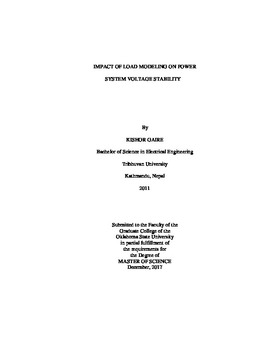| dc.description.abstract | Under normal operating conditions, the power system is operated such that acceptable steady voltages are maintained throughout the system buses. However, during disturbances, system voltage deviates from the rated values. A stable system restores its voltage to a stable equilibrium value. However, in an unstable system, the voltage cannot be restored to acceptable steady value, and the system voltage falls progressively. This will force the system into a cascading outage, leading to voltage collapse. It was reported that several blackouts throughout the world were caused due to voltage collapse, which caused huge financial losses and badly impacted social life. As the load models make a significant impact on the voltage stability phenomenon, power system loads are to be modeled such that they closely represent the real system loads. Dynamic load models were used as better load models than static load models for voltage stability study. However, a single dynamic load model cannot represent the dynamics of different types of loads connected to the system. So, aggregated load models such as complex loads were developed which incorporates the models of major types of loads connected in the system. In this thesis, impacts of load models in the static and dynamic voltage stability are analyzed. For static analysis, maximum loadability of power system using different load models are determined using Newton-Raphson power flow method and continuous power flow method. For dynamic analysis, short-term voltage stability is analyzed implementing a various combination of load models. It was observed that short-term voltage stability of the power system largely depends on the types of load and load combinations connected to the system. In static loads, constant power loads have a greater impact on voltage instability than constant impedance type of loads. Dynamic loads such as motor loads support the voltage instability mechanism. It was observed that the voltage collapse occurs for certain combination of static and dynamic loads. However, the voltage collapse was prevented when the combination of loads connected to the bus was changed. Thus, this can be one of the solutions to reduce voltage instability of the power system. | |
